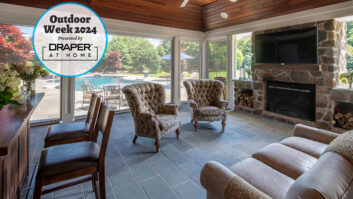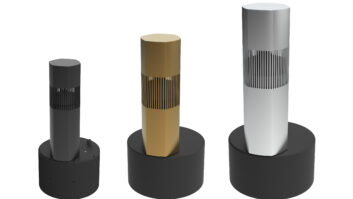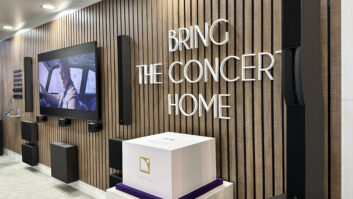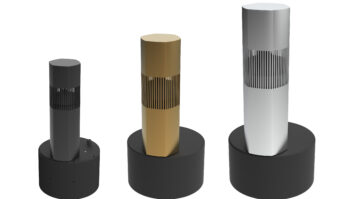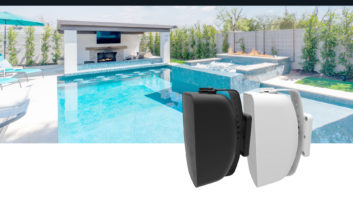Environmental Factors That Affect Audio Outside The House
The weather where I live has been so nice lately that my thoughts have turned to all those classic outdoor activities that we love so much, like hiking, biking, jogging, and home theater. Wait… home theater? Maybe it’s not the first thing that comes to mind, especially as winter weather looms throughout other parts of the country, but outdoor home theater is new challenge for many of us. And these outdoor set ups have just as many sonic issues as indoors.

Reverberation is most obvious acoustical difference between inside and outside the house. You simply do not experience all the multiple sound reflections that constitute reverberation when there aren’t four walls and a ceiling around you. On the other hand, individual sound reflections can still be very present and disruptive.
Background noise is another consideration. Ocean sounds, wind, car traffic, or airplane sounds can all be disruptive to a movie or music. Continuous noise can mask low-level detail in the program material, while periodic noise can momentarily distract the listener from the experience.
Yet another consideration is sound interference to the neighbors. Depending on the shape of the terrain, sound can carry quite far outdoors. At night, when overall noise levels are low, one outdoor home theater can become a nuisance to an entire neighborhood.
OUTDOOR SOUND REFLECTIONS
Sound reflections can come from an exterior wall of a house behind the listening location, or from a retaining wall to the side of the swimming pool. Because these reflections are alone and not diffused through reverberation, they can be more noticeable—similar to a tree being more visible alone than in a forest.

Anthony Grimani (agrimani@ pmiltd.com) is president of Performance Media Industries, a California-based acoustical engineering firm specializing in home theater design and calibration.
The result of individual reflections is usually poor dialog clarity and sound stage. Improving speaker orientation and directivity as well as listener placement can reduce the audibility of these reflections by making sure they don’t aim right at the listening area. You can also use materials that absorb or scatter the sound rather than reflect it. As an example, volcanic rock is quite porous and absorptive. We have used it in Hawaii to treat this issue.
CONSIDER THE SPEAKERS
Acoustics are a good starting point, but the speaker system must also deliver. Paying attention to the aiming of the speakers relative to sound reflection points is a first step. At the same time, you have to consider the direction of the neighbors’ homes and orient the speakers so they fire away from them as much as possible. Otherwise, it’s all the same issues as indoors:
■Stay away from corners
■ Make sure there is line of sight from the speakers to the listeners
■ Place the L/C/R speakers to form a 45-degree subtended angle to the listener
■ Place the side surround speakers at 90 to 110 degrees from center
■ Place the rear speakers at 160 to 170 degrees from center
■ Place subwoofers where convenient, because there aren’t standing wave resonances where there aren’t walls
Speakers, of course, need to be resistant to water, sun, and freezing temperatures. Plastic enclosures and sealed cabinetry are all important, and be sure to seal or cover all exposed connection points.
Also be prepared to provide more sound pressure capability outdoors, because the walls aren’t there to help with room gain. You could choose front speakers with focused directivity to avoid losing too much sound energy toward the trees.
Finally, are there any ways to avoid background noise? You could stop the traffic, shut down the airport, and make sure you listen when there is no wind or wave action. All joking aside, I suppose that you could make lightweight structures that block a portion of traffic or wave noise if necessary, using outdoor-rated sound absorptive materials.
Chase Walton contributed to this column. Richard Millson will return to the space in December.
